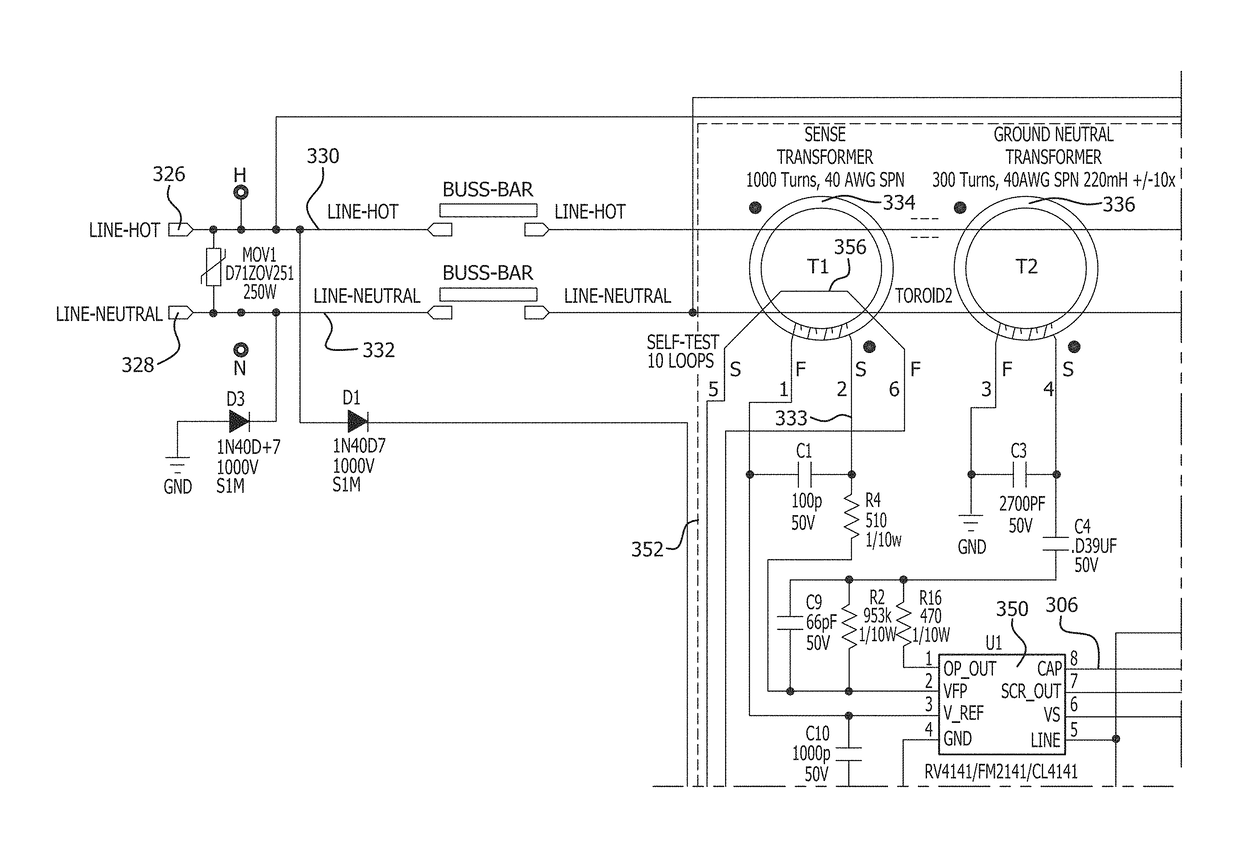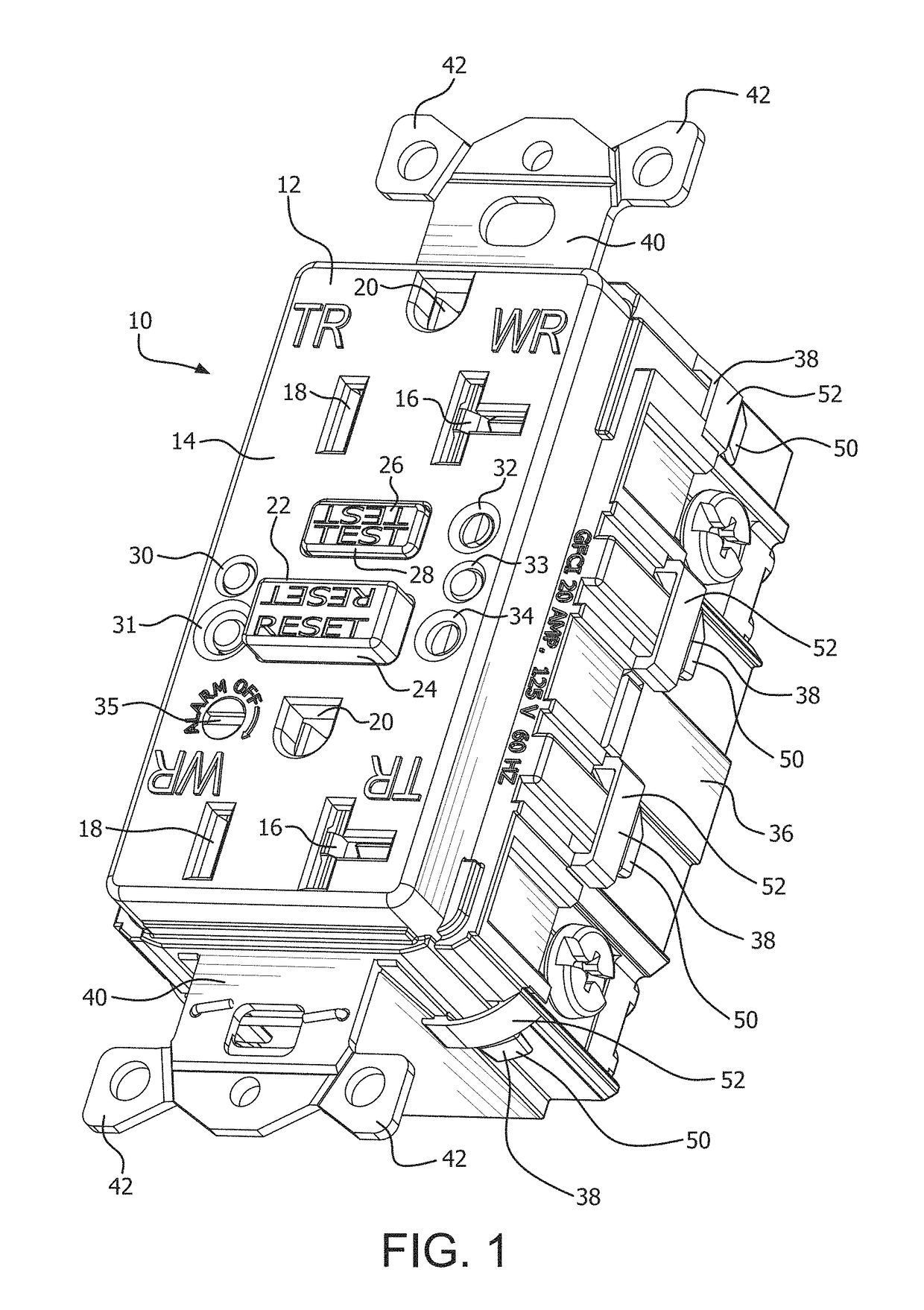GFCI self test software functional program for autonomous monitoring and fail safe power denial operations
a self-testing, functional program technology, applied in the direction of electronic circuit testing, electrical equipment, electrical protection circuit testing, etc., can solve the problems of device unable to properly detect ground faults and/or interrupt the flow of electrical current, device unsafe,
- Summary
- Abstract
- Description
- Claims
- Application Information
AI Technical Summary
Benefits of technology
Problems solved by technology
Method used
Image
Examples
Embodiment Construction
[0030]Exemplary embodiments of devices consistent with the present invention include one or more of the novel mechanical and / or electrical features described in detail below. For example, one or more of the exemplary embodiments of the invention disclosed include auto-monitoring or, self-test, features. Some self-test features and capabilities with respect to GFCI devices have been disclosed previously, for example, in U.S. Pat. Nos. 6,807,035, 6,807,036, 7,315,437, 7,443,309 and 7,791,848, and U.S. patent application Ser. No. 13 / 422,790, filed on Mar. 16, 2012, all which are commonly assigned to the same assignee of this application and the entire respective contents of which are incorporated herein by reference for all that is taught. An auto-monitoring feature consistent with the present invention disclosed herein is more robust than that which has been previously disclosed and reduces the probability of false or nuisance tripping by the device. For example, additional features a...
PUM
 Login to View More
Login to View More Abstract
Description
Claims
Application Information
 Login to View More
Login to View More - R&D
- Intellectual Property
- Life Sciences
- Materials
- Tech Scout
- Unparalleled Data Quality
- Higher Quality Content
- 60% Fewer Hallucinations
Browse by: Latest US Patents, China's latest patents, Technical Efficacy Thesaurus, Application Domain, Technology Topic, Popular Technical Reports.
© 2025 PatSnap. All rights reserved.Legal|Privacy policy|Modern Slavery Act Transparency Statement|Sitemap|About US| Contact US: help@patsnap.com



